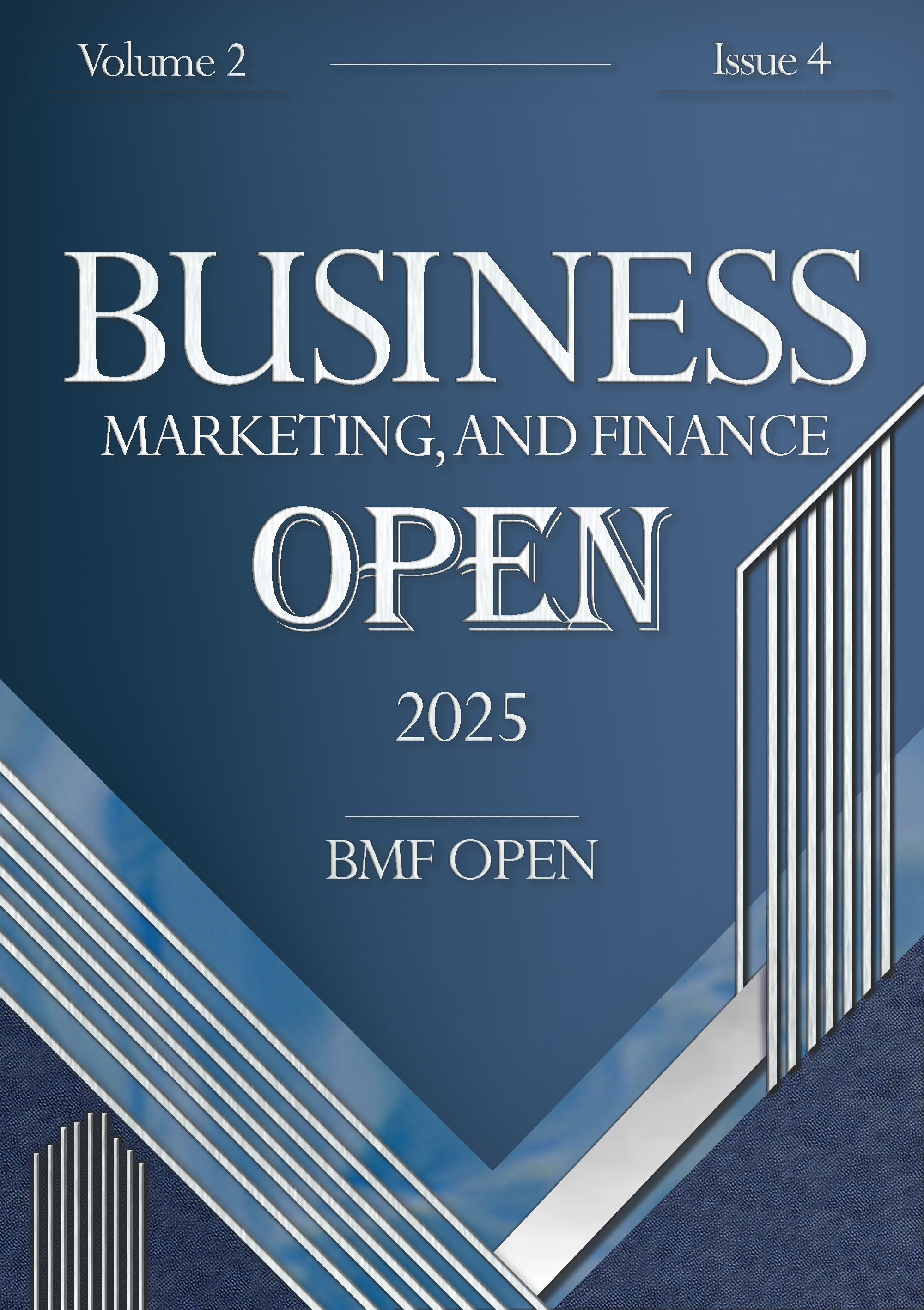Investigating the Role of Blockchain Technology and Artificial Intelligence in the Enhancement and Improvement of Accounting Information Systems Using an Interpretive Structural Approach
Keywords:
Accounting Information Systems, Blockchain Technology, Artificial IntelligenceAbstract
Blockchain technology and artificial intelligence can significantly enhance accounting information systems. Blockchain, by providing an immutable and transparent record of transactions, increases data reliability and security and enables accurate and real-time tracking of financial information. On the other hand, artificial intelligence, by analyzing big data and identifying patterns, can assist in improving financial forecasts, detecting fraud, and automating accounting processes. Together, these two technologies increase the efficiency, accuracy, and transparency of accounting systems, leading to improved decision-making. Therefore, this study was conducted to investigate the role of blockchain technology and artificial intelligence in enhancing and improving accounting information systems using an interpretive structural approach. The data required for the study were collected through interviews with expert accountants who had full familiarity with information technology, blockchain, and artificial intelligence. In this research, using Interpretive Structural Modeling (ISM), a framework for enhancing and improving accounting information systems based on blockchain technology and artificial intelligence was designed. Based on interpretive structural modeling, a total of 15 components were presented within three dimensions in the final ISM model. The components of reducing human error, managing and processing big data, improving process automation, forecasting and analyzing processes, and enhancing computations were placed under the dimension of "artificial intelligence" at the third level of the model. The components of increasing information security, decentralization, cost reduction, enhancing speed and efficiency, transaction transparency, and standardization were placed under the dimension of "blockchain technology" at the second level of the model. Additionally, the components of increasing information security, improving the accuracy and speed of reporting, enhancing transparency and reliability, and the enhancement and improvement of software were categorized under the dimension of "enhancement and improvement of accounting information systems" at the third level of the model.
References
A. Karimi, R. Darabi, M. R. Pourfakharian, and H. Moghaddam, "Predicting Information Quality Ranking with a Factor Analysis and Artificial Intelligence Approach," Pazhouhesh-ha-ye Hesabdari Mali va Hesabrasi (Financial Accounting and Auditing Research), vol. 14, no. 54, pp. 101-140, 2022.
M. H. Jarrahi, "Artificial intelligence and the future of work: human-AI symbiosis in organizational decision making," Business Horizons, vol. 61, no. 4, pp. 577-586, 2018, doi: 10.1016/j.bushor.2018.03.007.
K. C. Laudon and J. P. Laudon, Essential of Management Information System: Managing the Digital System. Canada, Prentice Hall, 2012.
C. E. Earley, "Data analytics in auditing: opportunities and challenges," Business Horizons, vol. 58, no. 5, pp. 493-500, 2015, doi: 10.1016/j.bushor.2015.05.002.
F. Azizi, F. Rahnemay Roodposhti, and M. H. A. U. K. V. Z. M. Khan Mohammadi, "Presenting a Model of the Effect of Accounting Information Systems Characteristics on System Performance Based on the Moderating Role of Work Uncertainty," Pazhouhesh-ha-ye Hesabdari Mali va Hesabrasi (Financial Accounting and Auditing Research), vol. 12, no. 47, pp. 31-54, 2020.
L. M. M. Zayed, M. I. Nour, K. Al Attar, H. Almubaideen, and G. A. M. Abdelaziz, "Role of Artificial Intelligence (AI) in Accounting Information Systems in Detecting Fraud," 2024, pp. 397-409.
N. Takhtaei, A. Shalal Nejad, and M. Shalal Nejad, "Artificial Intelligence and Blockchain in Accounting and Auditing," Cheshmandaz-e Hesabdari va Modiriyat (Accounting and Management Perspectives), vol. 6, no. 82 (Vol. 2), pp. 224-229, 2023.
A. Prasad and P. Green, "Organizational Competencies and Dynamic Accounting Information System Capability: Impact on AIS Processes and Firm Performance," Journal of Information Systems, vol. 29, no. 3, pp. 123-149, 2015, doi: 10.2308/isys-51127.
P. A. Pavlou and O. A. El Sawy, "Understanding The Elusive Black Box of Dynamic," 2011, doi: 10.1111/j.1540-5915.2010.00287.x.
I. Muda and A. A. Erlina, "Influence of human resources to the effect of system quality and information quality on the user satisfaction of accrual-based accounting system," Contaduria y administracion, vol. 64, no. 2, pp. 1-25, 2019, doi: 10.22201/fca.24488410e.2019.1667.
S. Caulkin, "An end to the numbers game," ed, 2003.
J. Hope and R. Fraser, Beyond Budgeting. Boston, MA: Harvard Business School Press, 2003.
W. G. De Sousa, E. R. P. de Melo, P. H. D. S. Bermejo, R. A. S. Farias, and A. O. Gomes, "How and where is artificial intelligence in the public sector going? A literature review and research agenda," Gov. Inf. Q., vol. 36, no. 4, 2019, doi: 10.1016/j.giq.2019.07.004.
P. Gomber, R. J. Kauffman, C. Parker, and B. W. Weber, "On the fintech revolution: Interpreting the forces of innovation, disruption, and transformation in financial services," J. Manag. Inf. Syst., vol. 35, no. 1, pp. 220-265, 2018, doi: 10.1080/07421222.2018.1440766.
H. Han, R. K. Shiwakoti, R. Jarvis, C. Mordi, and D. Botchie, "Accounting and auditing with blockchain technology and artificial Intelligence: A literature review," International Journal of Accounting Information Systems, vol. 48, 2023, doi: 10.1016/j.accinf.2022.100598.
B. S. Tan and K. Y. Low, "Blockchain as the database engine in the accounting system," Aust. Account. Rev., vol. 29, no. 2, pp. 312-318, 2019, doi: 10.1111/auar.12278.
B. Ş. Alkan, "How Blockchain and Artificial Intelligence Will Effect the Cloud-Based Accounting Information Systems?," vol. 2, 2022, pp. 107-119.
M. A. U. J. A. Gharsi, A. Pakmaram, and N. Rezaei, "Accounting Information System Based on Blockchain Architecture: Model Design," Faslnameh-ye Tahlil-e Bazar Sarmayeh (Capital Market Analysis Quarterly), vol. 2, no. 4, pp. 181-210, 2024.
G. Esmaeili Kia and R. Mohtasham, "Public Sector Balanced Scorecard, Effectiveness of Accounting Information Systems and Sustainable Performance in the Public Sector - A Case Study of Government Offices in Bushehr," Motale'at-e Tajrobi-ye Hesabdari Mali (Empirical Studies in Financial Accounting), vol. 20, no. 77, pp. 219-259, 2023.
F. Asnad, "Blockchain Technology and the Role of the Auditing Ecosystem in Supporting Blockchain-Based Accounting," 2021: Sari.
V. Ghanuni Shishvan, S. Elahi, A. Yazdian Varjani, and S. Dari Nogarani. "Application of Blockchain Technology in the Value Added Tax System." Tehran. https://civilica.com/doc/1258253 (accessed.
O. Fullana and J. Ruiz, "Accounting Information Systems in the Blockchain Era," International Journal of Intellectual Property Management, vol. 11, no. 1, pp. 63-80, 2021, doi: 10.1504/IJIPM.2021.113357.
Downloads
Published
Submitted
Revised
Accepted
Issue
Section
License
Copyright (c) 2025 Business, Marketing, and Finance Open

This work is licensed under a Creative Commons Attribution-NonCommercial 4.0 International License.







